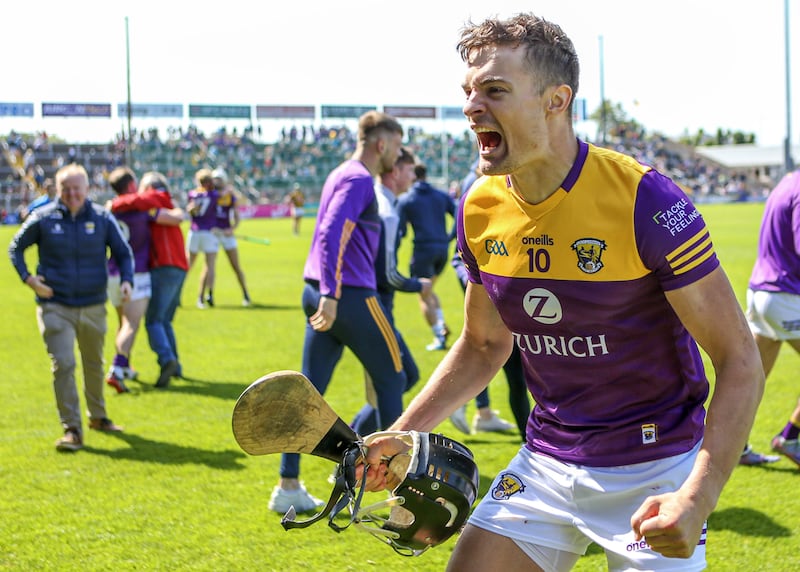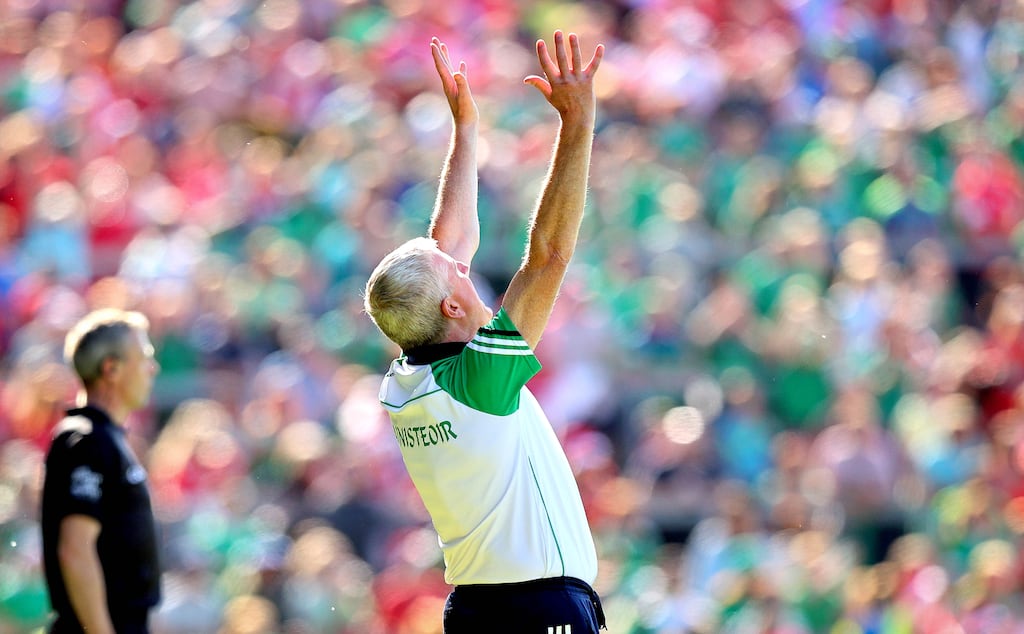In the vast landfill of the internet you will find precious footage of the 1980 Munster final between Limerick and Cork. The Sunday Game highlights have been spliced into four 10-minute segments and uploaded on to YouTube by a civic-minded enthusiast.
For me, it was an irresistible wormhole through time. My first visit to Croke Park was to see that Limerick team in the 1981 All-Ireland semi-final, while that Cork team glittered with the idols of my childhood. Looking at the teams now the names have an everlasting resonance: Jimmy Barry-Murphy, Ray Cummins, Tom Cashman, Eamon Cregan, Joe McKenna, Tommy Quaid, and a kaleidoscope of others.
All these years later it was both thrilling and bracing to watch it again. The greatness of the best players on those teams was established long ago, and won’t ever be exposed to the radiation of second thoughts.
But the hurling that day was scratchy, however blasphemous or ungrateful it might be to say that now. There were fluffed pickups and mistimed strikes and an accent on fire rather than finesse. The massive crowd loved it. Every collision and first-time pull was greeted with a tribal roar.
READ MORE
Everything is of its time. The ball was heavier and harder, the hurleys were longer, strategy hadn’t yet been conceived as an active ingredient in the game, beyond canny team selections and reactive switches. Passing the ball was an afterthought, or an option of last resort, but it wasn’t normal or necessarily encouraged. According to conventional wisdom there were better things to do with the ball.
But you couldn’t watch that match, played by those giants of the game, and say that hurling was better then. It wasn’t: it is better now.
Lining up players and matches from different eras and making them stand for comparison is a vexatious and dispiriting business. The awe we felt watching those players, more than 40 years ago, is no less valid than the awe we feel now, gawping at the modern players with their unfathomable skill.
In the GAA, though, the present is often harassed by the past. Mythologising is such a powerful thread in the GAA’s oral tradition that it has always been hard to argue, even if you had a mind to do so. Nostalgia has an addictive quality too. Nobody wants their childhood heroes to be queried, or reduced.
But sometimes it is important to take a breath and rejoice in the here and now; grasp it, luxuriate in it, go mad about it.
Last Sunday week, May 27th, was the greatest day in the history of the hurling championship. That would have been a light-headed thing to say at tea-time, just after the Munster games had finished, and it would have been a giddy conclusion a few hours later, maybe after a few pints on a balmy day. But when everything settled down, it was the only sensible thing to say. Even though it happened under our noses maybe we didn’t take the time to stop and notice.
It was partly the happy outcome of circumstance: before the round-robin system, there would never have been so many hurling championship matches played on the same day, and until this year, the final round of games in Leinster and Munster had been kept apart.
But even allowing for all that, it was staggering that all five games should be so consequential; that two of them should be so mesmerisingly brilliant; that one of them (Kilkenny v Wexford) should have an inbuilt 14-point scoreboard swing, and that another (Galway v Dublin) should have a 13-point swing; that three of the games should still be in the balance in stoppage-time. That there were two outright shocks.
Kilkenny and Wexford shared nine goals in a championship match for the first time since 1972. In the words of Nicky English, Limerick and Cork was as good a hurling match as he had ever seen.
All of that will probably never happen again. It is a miracle that it happened once.

The most amazing thing about hurling in the last 12 or 15 years is how much it has changed, and yet how resilient its brilliance has been. In the 2010 All-Ireland final just 48 stick passes were attempted; by 2021, there were an average of 153 stick passes per game. A skill that barely existed at the beginning of the century is now the scaffolding on which every team builds their play. That is not just a step change, it is an evolutionary leap.
Hurling got into a knot with sweepers, and mercenary defenders of various stripes. That argument is over now. Every team has extra security measures, but no team can keep the scoring down. In the most defensive-minded era in the history of the game, scoring continues to surge.
Of the 25 games played so far this season in the Liam MacCarthy Cup, 10 of them have contained 50 scores, or more. On the greatest day in the history of the hurling championship 22 goals were scored, across five games. After all our fretting about sweepers it turns out that nobody can really defend.
Parts of the modern game are not to everyone’s taste, but audiences have adapted too because, in different ways, the spectacle was irresistible still. Before Christmas I spent an evening with three former Limerick players whose sons are stars of the current team: Ger Hegarty, Mike Nash and Brian Finn. They were talking about the first season under John Kiely and Paul Kinnerk, when Limerick’s attempts at a precision game kept breaking down.
“You’d be above in the stand,” said Mike, “and you were saying, ‘Will you just hit the bloody thing – just get rid of it rather than this passing around.’” Those feelings changed. Very soon everyone could see that Limerick were taking the game to a new place. “The way they’re playing,” said Mike, “they’re showing all their skills.”
Mike was a great full back in the old tradition; his son Barry is the first playmaking, point-scoring, goalscoring, overlapping corner back in the history of the game. Kinnerk imagined it and Nash brought it to life. Hurling, a game for so long defined by its conservatism, is open to anything now.
One more thing. If Cregan and JBM were playing now, nobody would hold them. With the kind of ball that’s going in? Not a hope.
Six days to the Munster and Leinster finals. Revel in it.


















